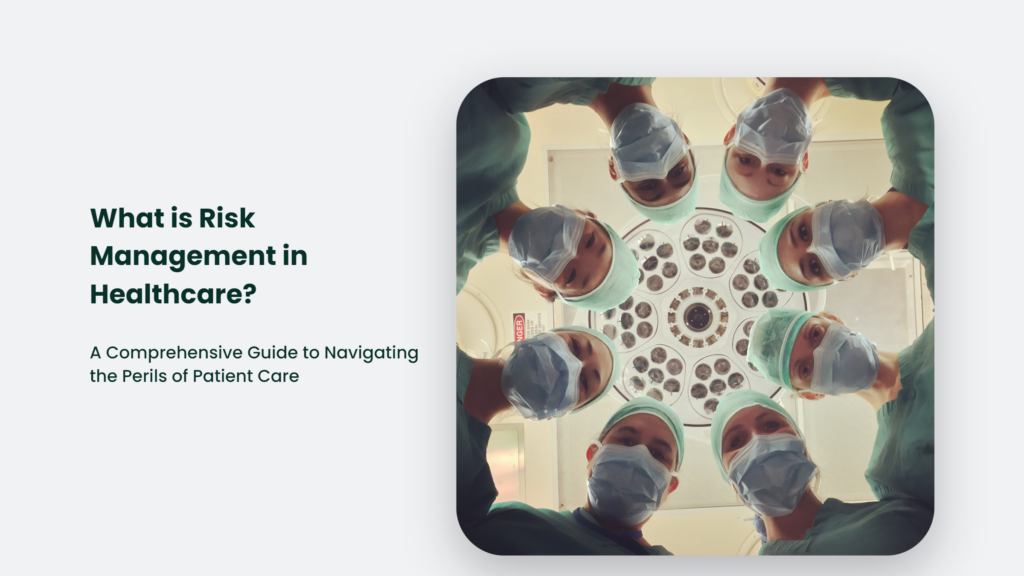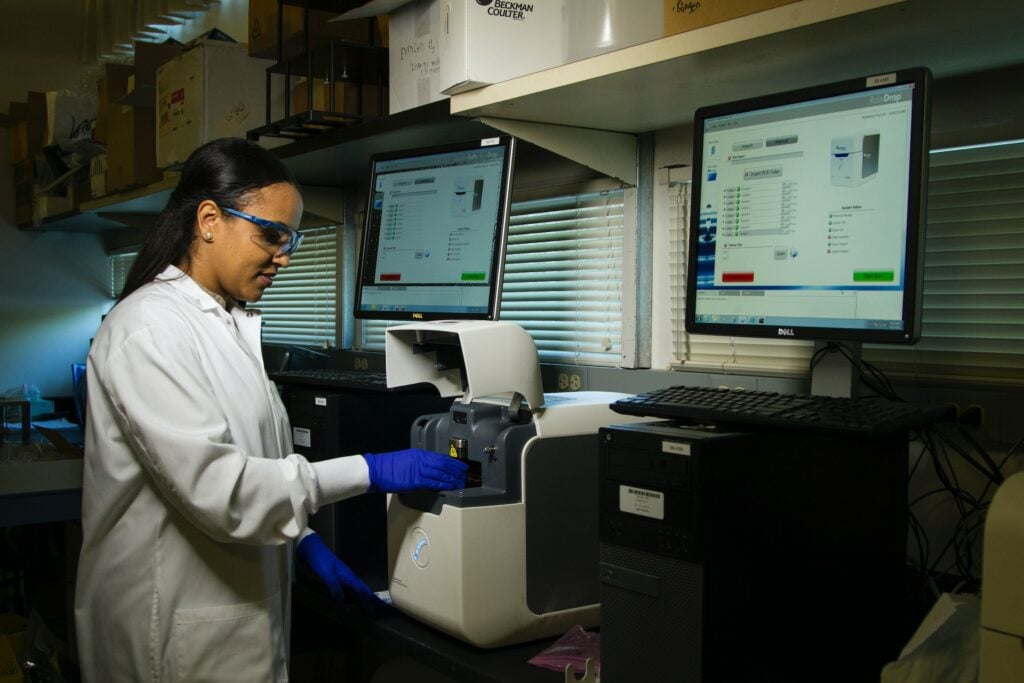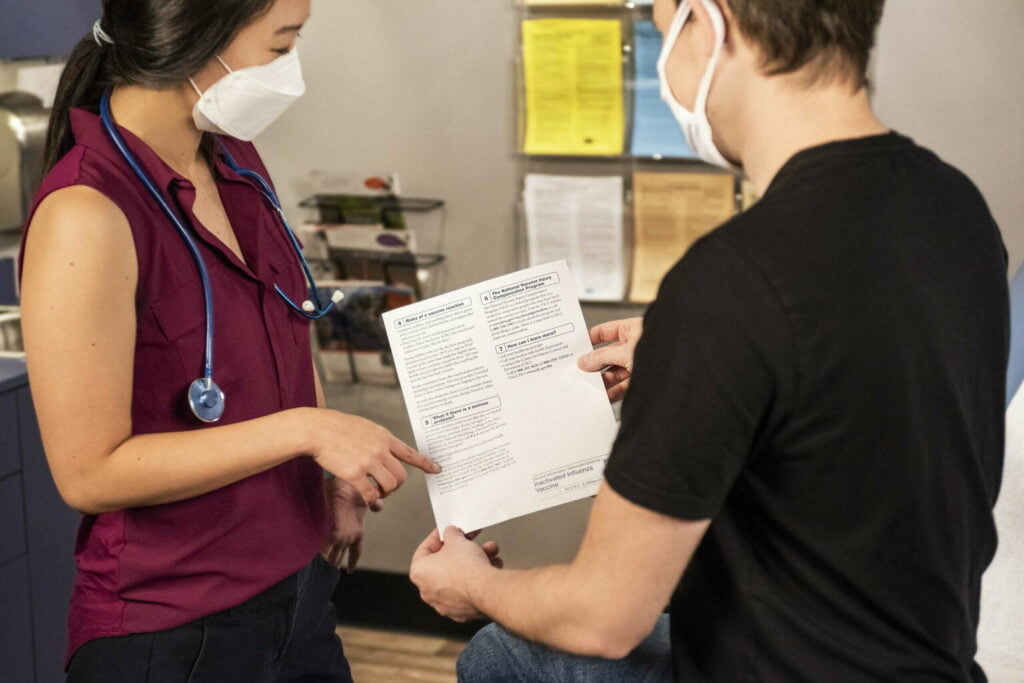In the high-stakes world of healthcare, effective risk management is crucial for ensuring patient safety, maintaining operational efficiency, and protecting healthcare organisations’ reputations and financial stability.
Risk management in healthcare encompasses a wide range of clinical and administrative systems, processes, and procedures designed to identify, assess, mitigate, and prevent risks to patients, staff, and the organisation.
This article aims to provide a comprehensive overview of risk management in healthcare, exploring its importance, the various steps involved, and the role of technology in enhancing risk management efforts.
By understanding and implementing robust risk management strategies, healthcare organisations can create a safer environment for patients and staff while safeguarding their own success and longevity.

What is Risk Management in Healthcare?
Risk management in healthcare is a complex set of clinical and administrative systems, processes, procedures, and reporting structures designed to detect, monitor, assess, mitigate, and prevent patient risks. Understanding and implementing effective risk management strategies is crucial for healthcare organisations in a world where human lives are on the line.
The Five Basic Steps of Healthcare Risk Management: A Deeper Dive
Healthcare risk management is critical to ensuring patient safety and the smooth operation of healthcare organisations. This section will delve deeper into the five basic steps of healthcare risk management outlined by the Journal of Epidemiology and Preventive Medicine.
Identifying Potential Risks
The first step in healthcare risk management is identifying potential risks. It involves gathering data from various sources, such as incident reports, patient records, equipment maintenance logs, and staff feedback. By analysing this data, healthcare organisations can identify trends, patterns, and potential areas of concern.
For example, a hospital may notice increased patient falls in a particular ward. By identifying this trend, the organisation can investigate the underlying causes and implement strategies to address the issue.
Analysing and Evaluating the Risks
Once potential risks have been identified, they must be analysed and evaluated. It involves assessing the likelihood of each risk occurring and the potential impact on patient safety, staff well-being, and the organisation’s reputation and finances.
Risk analysis may involve quantitative methods, such as statistical analysis, or qualitative methods, such as expert opinions and scenario analysis. The goal is to prioritise risks based on their potential impact and likelihood of occurrence, allowing healthcare organisations to focus their resources on the most significant threats.
Developing Strategies to Mitigate the Risks
With a clear understanding of the potential risks and their relative importance, healthcare organisations can develop strategies to mitigate these risks. It may involve implementing new policies and procedures, investing in staff training, or upgrading equipment and technology.
For example, to address the issue of patient falls, a hospital may introduce a fall prevention program, which could include staff education, environmental modifications, and assistive devices.
Implementing the Strategies
Once risk mitigation strategies have been developed, they must be implemented across the organisation. Clear communication, staff training, and ongoing monitoring are required to ensure the strategies are followed and effectively reduce risks.
Implementation may involve:
- Assigning responsibilities to specific staff members or teams.
- Setting deadlines for completion.
- Providing the necessary resources and support to ensure success.
Monitoring and Reviewing the Effectiveness of the Strategies
The final step in healthcare risk management is monitoring and reviewing the effectiveness of the implemented strategies. It involves collecting data on key performance indicators, such as incident rates, patient outcomes, and staff satisfaction, and comparing these to established benchmarks or targets.
Regular reviews of risk management strategies allow healthcare organisations to identify areas for improvement and make adjustments as needed. This ongoing process ensures that risk management remains a dynamic and proactive aspect of healthcare operations, continually adapting to new challenges and evolving needs.
The Role of Technology in Risk Management: Unlocking the Potential for Safer Healthcare
Technology plays a pivotal role in risk management in today’s rapidly evolving healthcare landscape. By leveraging cutting-edge tools and systems, healthcare organisations can better identify, analyse, and mitigate potential risks, ultimately enhancing patient safety and operational efficiency.
In this section, we will explore the various ways technology contributes to risk management in healthcare and discuss some of the challenges and opportunities associated with its adoption.
Harnessing Data Analytics for Risk Identification and Analysis
Data analytics is a powerful tool for identifying and analysing potential risks in healthcare. By collecting and analysing data from various sources, such as electronic health records, incident reports, and equipment maintenance logs, healthcare organisations can uncover trends, patterns, and areas of concern. For instance, a hospital may notice increased patient falls in a specific ward, prompting further investigation and targeted risk mitigation strategies.
Risk Management Software: Streamlining Processes and Enhancing Decision-Making
Risk management software is another essential component of technology-driven risk management. These systems enable healthcare organisations to automate and streamline risk management processes, such as incident reporting, risk assessment, and strategy implementation. By providing real-time data and insights, risk management software empowers decision-makers to make informed choices and prioritise resources effectively.
Artificial Intelligence and Machine Learning: Revolutionizing Risk Prediction and Mitigation
Artificial intelligence (AI) and machine learning technologies are transforming risk management in healthcare. These advanced tools can analyse vast amounts of data to identify patterns and predict potential risks, enabling healthcare organisations to address issues before they escalate proactively. For example, AI algorithms can predict the likelihood of patient readmissions or adverse drug reactions, allowing healthcare providers to take preventive measures and improve patient outcomes.
Overcoming Challenges in Technology Adoption
Despite technology’s immense potential in risk management, healthcare organisations face several challenges in adopting and integrating these tools. Some of the most common challenges include:
- Security and privacy concerns: Healthcare organisations must protect sensitive patient data from unauthorised access and breaches.
- Integration with existing systems: Seamless integration of risk management technology with other healthcare systems is crucial for effective risk management.
- Staff training and resistance to change: Healthcare professionals must be adequately trained and supported in using new technologies, and organisations must address any resistance to change.
The Future of Technology in Healthcare Risk Management
As technology advances, its role in healthcare risk management will increase significantly. Healthcare organisations must stay abreast of emerging technologies and invest in the tools and systems that best support their risk management efforts. By embracing technology-driven risk management, healthcare providers can create a safer environment for patients, staff, and visitors while protecting their reputation and financial stability.
The Power of Data and Statistics
Data and statistics are essential in supporting arguments and informing decision-making in risk management. For example, the Varonis 2021 Healthcare Data Risk Report found that 20% of all files at hospitals, biotech firms, and pharma companies are open to every employee, highlighting the need for better data security measures.
The Impact of Risk Management on Patient Care: Enhancing Safety and Quality in Healthcare

Risk management is crucial in enhancing patient care and safety in healthcare organisations. Healthcare providers can create a safer environment for patients, staff, and visitors by identifying, analysing, and mitigating potential risks. In this section, we will discuss the various ways risk management impacts patient care and explore some examples of how effective risk management strategies can lead to improved patient outcomes.
Reducing Patient Safety Incidents
One of the primary goals of risk management in healthcare is to reduce patient safety incidents, such as medication errors, falls, and hospital-acquired infections. By implementing robust risk management strategies, healthcare organisations can identify potential hazards and take proactive measures to prevent these incidents from occurring. For example, a hospital may introduce a fall prevention program, including staff education, environmental modifications, and assistive devices.
Enhancing Patient Experience
Risk management also plays a role in enhancing the overall patient experience. Healthcare organisations can improve patient satisfaction and trust in their care by addressing potential risks and ensuring a safe environment. For instance, effective communication and a culture of safety can help patients feel more comfortable and confident in their healthcare providers, leading to better patient-provider relationships and improved patient outcomes.
Reducing Financial and Liability Risks
Effective risk management can also help healthcare organisations reduce financial and liability risks associated with patient care. By proactively addressing potential hazards and implementing strategies to mitigate these risks, healthcare providers can minimise the likelihood of costly malpractice claims, insurance reimbursement denials, and other financial consequences.
Supporting Continuous Improvement in Healthcare
Risk management in healthcare supports continuous improvement by encouraging healthcare organisations to regularly assess and evaluate potential risks, implement effective mitigation strategies, and monitor the effectiveness of these strategies. This ongoing process ensures that risk management remains a dynamic and proactive aspect of healthcare operations, continually adapting to new challenges and evolving needs.
Fostering a Culture of Safety
A strong risk management program can help foster a safety culture within a healthcare organisation. By prioritising patient safety and promoting a proactive approach to risk management, healthcare providers can create an environment where staff feel empowered to report potential hazards and take action to prevent patient harm.
Frequently Asked Questions:
What is the main goal of risk management in healthcare?
The primary goal of risk management in healthcare is to protect patients, staff, and the organization by identifying, assessing, and mitigating potential risks.
How does technology help in risk management?
Technology, such as data analytics, risk management software, and AI, helps healthcare organizations monitor risks, identify trends and patterns, and make informed decisions to implement effective strategies.
What are some examples of risks in healthcare?
Examples of risks in healthcare include patient safety incidents, data breaches, equipment malfunctions, and infection outbreaks.
Conclusion:
Risk management in healthcare is an ongoing process that requires constant vigilance and adaptation. As technology advances and new challenges emerge, healthcare organisations must continue prioritising risk management to ensure the safety and well-being of patients, staff, and the organisation. By staying informed, proactive, and adaptable, healthcare organisations can navigate the perils of patient care and create a safer, more efficient environment for all.




